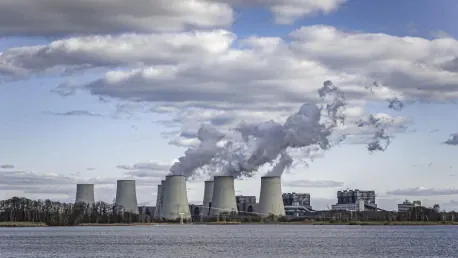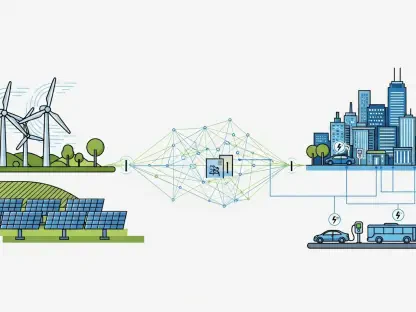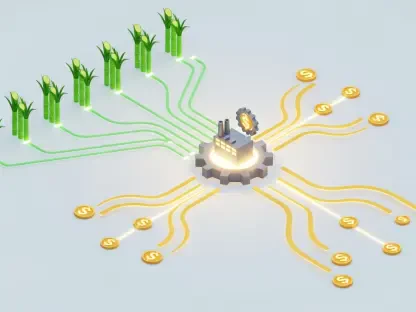The recent signing of a Memorandum of Understanding (MOU) between the Philippine Department of Energy (PDOE) and Korea Hydro & Nuclear Power (KHNP) marks a significant development in the energy sector of the Philippines. This agreement focuses on conducting a feasibility study on the rehabilitation of the Bataan Nuclear Power Plant (BNPP). The initiative highlights the ongoing energy cooperation and the strategic objectives both nations aim to achieve through this collaboration.
Strategic Importance for the Philippines and South Korea
Philippine Energy Security Objectives
The Philippines faces a growing demand for electricity, spurring efforts to secure a stable and sustainable energy supply. The Philippine Energy Plan (PEP) outlines the country’s ambitions for incorporating nuclear energy into its power mix. By 2032, the Philippines aims to generate 1,200 Megawatts electric (MWe) from nuclear power, with long-term goals of increasing capacity to 2,400 MWe by 2040 and 4,800 MWe by 2050. The MOU with KHNP is a critical step toward these goals, providing a framework for informed decision-making about BNPP’s rehabilitation and broader nuclear energy strategies. The feasibility study funded by KHNP will offer valuable insights into the current condition of BNPP and its refurbishment potential. Should initial findings suggest that rehabilitation is impractical, alternative nuclear technologies or new site developments will be considered, ensuring a versatile approach to meeting the country’s energy needs.
South Korea’s Enhanced Role in Southeast Asia
For South Korea, the MOU represents an opportunity to strengthen its presence in Southeast Asia’s nuclear energy market. KHNP’s prior experience with BNPP makes it well-suited to conduct the feasibility study, enhancing its credibility and expertise. Success in the Philippines could open doors to similar projects across the region, building on South Korea’s established track record in countries like the United Arab Emirates and the Czech Republic. KHNP’s involvement in the Philippines not only reinforces bilateral ties but also positions South Korean firms to potentially lead future nuclear energy projects in other Southeast Asian countries. This endeavor underscores South Korea’s status as a competitive player in the global nuclear energy market.
Historical and Geopolitical Context of BNPP
The Origins and Challenges of BNPP
Built in response to the 1973 oil crisis, the Bataan Nuclear Power Plant was nearly completed by 1984 but was never operational due to several factors. Safety concerns raised by the Chernobyl disaster, the plant’s high costs, and its proximity to geological hazards such as a major fault line and the Pinatubo volcano contributed to its dormancy. During President Ferdinand Marcos’s regime, the Philippines invested $2.3 billion in the plant, which has since been maintained as a tourist attraction. The initiative to reconsider BNPP’s use gained momentum during President Rodrigo Duterte’s tenure and continues under President Ferdinand Marcos Jr. The feasibility study aims to provide a clear assessment of BNPP’s refurbishment potential, considering past safety and financial concerns.
Previous Assessments by South Korean Entities
In 2008 and 2017, South Korean firms including KHNP, Korea Electric Power Corporation (Kepco), KPS, and Doosan Heavy Industries & Construction conducted studies on BNPP. These assessments contribute to KHNP’s strong position in the upcoming feasibility study, leveraging prior knowledge of the plant’s infrastructure and limitations. The structured approach ensures that all findings from the feasibility study’s first phase will determine the direction of the project. If refurbishment is deemed unfeasible, recommendations for conventional plants or small modular reactors (SMRs) will be explored.
Feasibility Study and Future Prospects
Scope and Phases of the Feasibility Study
The MOU stipulates a two-phase feasibility study, fully funded by KHNP, evaluating BNPP’s current condition and refurbishment feasibility. The first phase involves a comprehensive assessment of the plant, including its components and overall viability. Should this phase discourage further investment, alternative options will be recommended. The second phase, contingent on positive findings from the first, will provide detailed plans for rehabilitation or the implementation of alternative nuclear technologies. This phased approach ensures that the Philippine government has multiple pathways to secure its energy future, backed by thorough research and expert recommendations.
The Role of the NEP-IAC and International Standards
The Nuclear Energy Programme – Inter-Agency Committee (NEP-IAC) spearheads the Philippines’ nuclear energy ambitions. This committee, led by PDOE, aligns with the International Atomic Energy Agency’s (IAEA) Milestones Approach. The NEP-IAC’s work includes various sub-committees addressing nuclear infrastructure issues, ensuring integration of nuclear power into the national energy mix. At the IAEA’s 68th General Conference in Vienna, the Philippines unveiled its Nuclear Energy Roadmap, pledging to establish an independent regulatory body for nuclear energy oversight. This commitment emphasizes adherence to international safety, sustainability, and transparency standards.
Implications for International Diplomacy and Energy Partnerships
Strengthening Strategic Energy Collaborations
The Memorandum of Understanding (MOU) between the Philippine Department of Energy (PDOE) and Korea Hydro & Nuclear Power (KHNP) highlights the broader international diplomacy and strategic energy partnerships that shape national energy policies. In the realm of international relations, such collaborations underscore the mutual benefits of leveraging technological expertise and resources to meet global energy demands. The feasibility study on the rehabilitation of the Bataan Nuclear Power Plant (BNPP) not only has significant implications for the Philippines’ energy security but also positions South Korea as a key player in this strategic sector. By engaging South Korean firms with a proven track record in nuclear energy projects, the Philippines gains access to valuable knowledge and technological advancements. The continued interaction between developing nations and established nuclear powers signifies a growing trend where international collaboration becomes indispensable in addressing complex energy challenges. As nations aim to diversify their energy mix and improve sustainability, the partnerships cultivated through initiatives such as the MOU provide a pathway to achieving these goals while adhering to nuclear safety and regulatory standards.
Broader Implications for Southeast Asia and Beyond
The recent signing of a Memorandum of Understanding (MOU) between the Philippine Department of Energy (PDOE) and Korea Hydro & Nuclear Power (KHNP) is a landmark event in the Philippines’ energy sector. This agreement aims to carry out a feasibility study to reassess the potential of the Bataan Nuclear Power Plant (BNPP) for rehabilitation. Originally built in the 1970s, the BNPP has been a topic of debate for decades due to safety and environmental concerns. This initiative underscores the evolving energy cooperation between the Philippines and South Korea, emphasizing joint efforts to explore and possibly harness nuclear power as a viable energy source. The feasibility study will consider various factors, including the current state of the plant, technological advancements, safety standards, and potential environmental impacts. By working together on this project, both nations seek to address energy security issues, diversify energy sources, and achieve broader strategic objectives. The collaboration also opens doors for the exchange of knowledge, technology, and expertise, thereby strengthening bilateral relations.









